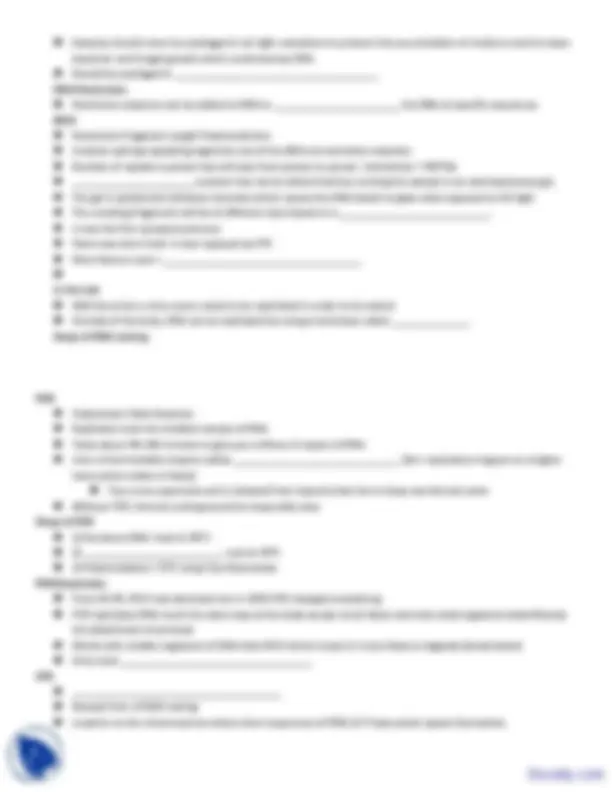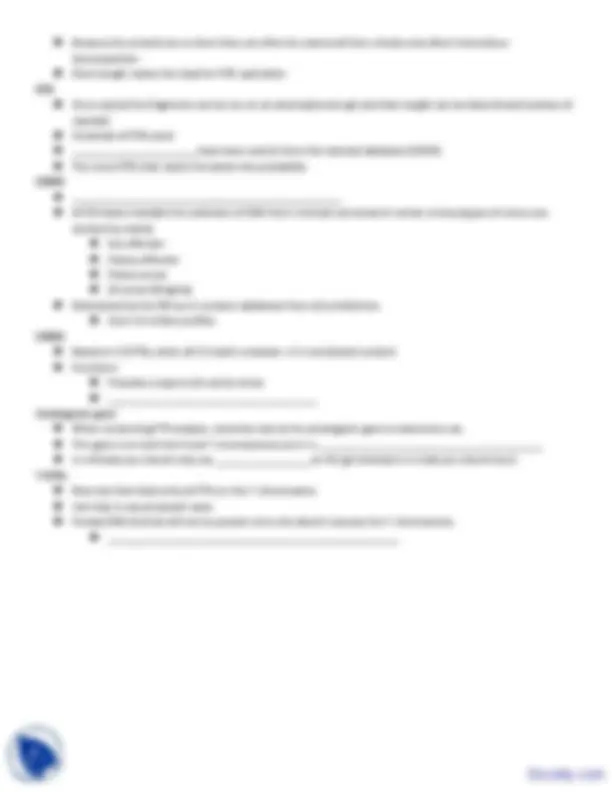




Study with the several resources on Docsity

Earn points by helping other students or get them with a premium plan


Prepare for your exams
Study with the several resources on Docsity

Earn points to download
Earn points by helping other students or get them with a premium plan
Community
Ask the community for help and clear up your study doubts
Discover the best universities in your country according to Docsity users
Free resources
Download our free guides on studying techniques, anxiety management strategies, and thesis advice from Docsity tutors
Forensic science (often shortened to forensics) is the application of a broad spectrum of sciences and technologies to investigate and establish facts of interest in relation to criminal or civil law. This lecture includes: DNA Fingerprinting, Scientists, Fingerprinting, Regular Cell, Chromosomes, Sex Cells, Chromosomes, Sugar, Deoxyribose, Nitrogen Base
Typology: Study notes
1 / 4

This page cannot be seen from the preview
Don't miss anything!



DNA Fingerprinting Scientists first discovered DNA in the 1800’s but it had no interest for the legal system until 1985 when___________________________ revealed his research that suggested that DNA is a unique as a fingerprinting. (thus the term DNA fingerprinting) The Basics We have about 60 trillion cells and each of those cells contains a full set of our chromosomes _________(2 sets of 23) in a regular cell 23 (one set) in a __________________ You inherit 1 set of chromosomes (23) from your mother and one set (23) from your father. Your sex cells (sperm or egg) only have ______________ that is randomly made from a mixture of your two sets. The Basics Chromosomes are found in the _________________________ They typically take the form of _____________________ Chromosomes are made of_________ (deoxyribonucleic acid). DNA is in the shape of a spiral double helix (twisted ladder) DNA has three parts Sugar (deoxyribose _______________________ Nitrogen base (Adenine, Cytosine, Thymine, or ___________________) The sugar and phosphates make up the sides of the ladder. The __________________ make up the rungs. DNA It is the sequence of ________________________ (A,C,T, G) that make each person’s DNA unique. A is always found paired with T; _______________________________________________________ However, the large majority of the sequence is identical person to person (99.9%) It is the _____________ difference that causes us to be unique. There are about ________________________________ in a Human’s DNA. The Basics On those chromosomes there are about _________________________. Genes are the basic unit of heredity. Each gene has a single function (in other words it codes for a single protein.) It codes for something by having a specific set of ______________________. A change in the base pair order can change what the gene codes for. Together, the proteins our genes code for make us who we are. Alleles Each person has _______________________ of each gene (one from each parent) Those two copies are referred to as ____________________from that gene. If the alleles are the same we say the person is____________________________ If the alleles are different we say the person is ____________________________ Tandem Repeats A region of a chromosome that contains multiple copies of a DNA sequence arranged in a repeating fashion. CAGCAGCAGCAGCAGCAGCAGCAGCAG Roughly ___________________ of our DNA Large variation in number of repeats from person to person. (This is what makes our DNA unique) Follow basic Mendelian inheritance (Think Punnett Squares) Genome _______________________________________________________________________________
Variable Number of Tandem Repeats This is why _______________________ works Refers to the length of ________________________ in the DNA of individuals The chances of anyone having the same results are less than one in a million. Other types of DNA The DNA we are familiar with is nuclear DNA. It is our genetic material. However, there is also mitochondrial DNA in your mitochondria. Mitochondrial DNA comes only from your _____________________________. Why? Your mitochondrial DNA matches all your maternal relatives. Nuclear DNA vs. Mitochondrial DNA Nuclear DNA is more useful in that it can be linked to a _____________________________. _____________________ DNA however lasts longer (more stable) There are thousands of mitochondria in a cell so there is a lot of mitochondrial DNA in each cell. DNA Replication Our body has to copy DNA every time we need a new cell. DNA replicates through a process called semiconservative replication. It follows complementary base pairing rules. The primary enzyme responsible is ______________________________ Why is DNA useful?
Where can DNA be found?
Reference samples Reference samples are taken from:
Collecting DNA Care should be taken to avoid contamination Disposable forceps, change gloves between items, Package separately Must be air dried before packaging to avoid _____________ (which destroys the evidence) Evidence should be kept __________________ Contamination is usually easily seen in the lab (if more than 2 bands are present) If blood can’t be seen it can be detected with _________________ without any damage to the DNA. Collection of DNA It is necessary only to collect 36 dna-bearing cells in order to have enough DNA to test and some new tests can go as low as 9 cells
Because the strands are so short they can often be recovered from a body even after tremendous decomposition Short length makes the ideal for PCR replication STR Once copied the fragments can be run on an electrophoresis gel and their length can be determined (number of repeats) Hundreds of STRs exist _______________________have been used to form the national database (CODIS) The more STRs that match the better the probability CODIS _________________________________________________ All 50 states mandate the collection of DNA from criminals convicted of certain crimes (types of crimes are decided by states) Sex offender Felony offender Felony arrest All arrest (Virginia) Maintained by the FBI but it contains databases from all jurisdictions. Over 1.4 million profiles CODIS Based on 13 STRs; when all 13 match a sample---it is considered a match Functions: Provides a way to link serial crimes ______________________________________ Amelogenin gene When conducting STR analysis, scientists look at the amelogenin gene to determine sex. This gene is on both the X and Y chromosomes but it is _________________________________________ In a female you should only see _________________ on the gel whereas in a male you should see 2. Y-STRs New test that looks only at STRs on the Y chromosome Can help in sexual assault cases Female DNA (victim) will not be present since she doesn’t possess the Y chromosome. _____________________________________________________